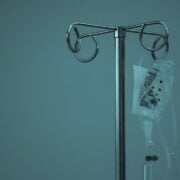
Boost Your Physical and Cardiovascular Health with These Simple Tips
Physical and cardiovascular health are essential components of overall well-being. Physical health refers to the state of the body and its ability to perform daily activities without experiencing fatigue or pain. On the other hand, cardiovascular health refers to the health of the heart and blood vessels. Both physical and cardiovascular health are interconnected, and maintaining them is crucial for a long and healthy life.
Key Takeaways
- Regular exercise is crucial for maintaining physical health.
- Cardiovascular exercise is particularly important for heart health.
- Starting and sticking to an exercise routine can be challenging, but it’s worth it.
- Strength training is an important component of overall physical health.
- Good nutrition, hydration, sleep, and stress management are all key to achieving long-term physical and cardiovascular health goals.
Importance of Regular Exercise for Physical Health
Regular exercise plays a vital role in maintaining physical health. When we engage in physical activity, our muscles become stronger, our bones become denser, and our joints become more flexible. Exercise also helps to improve our balance and coordination, reducing the risk of falls and injuries.
In addition to these physical benefits, exercise also helps to improve our mental health. It releases endorphins, which are known as “feel-good” hormones, promoting a sense of well-being and reducing symptoms of depression and anxiety.
Benefits of Cardiovascular Exercise for Heart Health
Cardiovascular exercise, also known as aerobic exercise, is particularly beneficial for heart health. When we engage in activities such as running, swimming, or cycling, our heart rate increases, and our blood vessels dilate. This allows for better blood flow throughout the body, delivering oxygen and nutrients to our organs and muscles.
Regular cardiovascular exercise helps to strengthen the heart muscle, making it more efficient at pumping blood. It also helps to lower blood pressure and reduce the risk of developing heart disease. Additionally, cardiovascular exercise can help to improve cholesterol levels by increasing the levels of HDL (good) cholesterol and decreasing the levels of LDL (bad) cholesterol.
Tips for Starting and Sticking to an Exercise Routine
| Tips for Starting and Sticking to an Exercise Routine |
|---|
| Set realistic goals |
| Find an exercise you enjoy |
| Make a schedule and stick to it |
| Track your progress |
| Get a workout buddy |
| Stay hydrated |
| Warm up and cool down properly |
| Listen to your body and rest when needed |
| Stay motivated with music or podcasts |
| Try new exercises to keep it interesting |
Starting an exercise routine can be challenging, but with the right approach, it can become a habit that you enjoy and look forward to. Here are some tips for getting started:
1. Set realistic goals: Start with small, achievable goals and gradually increase the intensity and duration of your workouts. This will help you build confidence and prevent burnout.
2. Find activities you enjoy: Choose activities that you enjoy doing, whether it’s dancing, hiking, or playing a sport. When you enjoy what you’re doing, you’re more likely to stick with it.
3. Make it a priority: Schedule your workouts like any other appointment and treat them as non-negotiable. By making exercise a priority, you’re more likely to stick to your routine.
4. Find a workout buddy: Exercising with a friend or family member can make it more enjoyable and help keep you accountable. You can motivate each other and make your workouts more fun.
Incorporating Strength Training for Overall Physical Health
While cardiovascular exercise is important for heart health, incorporating strength training into your routine is equally essential for overall physical health. Strength training helps to build and maintain muscle mass, which is important for maintaining a healthy weight and preventing age-related muscle loss.
In addition to building muscle, strength training also helps to improve bone density, reducing the risk of osteoporosis. It can also improve posture, balance, and stability, reducing the risk of falls and injuries.
To incorporate strength training into your routine, start with bodyweight exercises such as squats, push-ups, and planks. As you become stronger, you can gradually add weights or resistance bands to increase the intensity of your workouts.
The Role of Nutrition in Boosting Physical and Cardiovascular Health

Nutrition plays a crucial role in boosting physical and cardiovascular health. A healthy diet provides the necessary nutrients for our bodies to function optimally. It helps to maintain a healthy weight, reduce inflammation, and lower the risk of chronic diseases such as heart disease and diabetes.
To boost physical and cardiovascular health through nutrition, focus on consuming a balanced diet that includes a variety of fruits, vegetables, whole grains, lean proteins, and healthy fats. Limit your intake of processed foods, sugary drinks, and saturated fats.
It’s also important to stay hydrated by drinking plenty of water throughout the day. Hydration is essential for maintaining optimal physical performance and cardiovascular health.
Importance of Hydration for Physical Performance
Staying hydrated is crucial for optimal physical performance. When we exercise, our bodies lose water through sweat, and if we don’t replenish it, we can become dehydrated. Dehydration can lead to fatigue, muscle cramps, and decreased exercise performance.
To stay hydrated during exercise, drink water before, during, and after your workouts. The amount of water you need depends on factors such as the intensity and duration of your exercise, as well as environmental conditions. It’s important to listen to your body and drink when you feel thirsty.
In addition to staying hydrated during exercise, it’s also important to maintain hydration throughout the day. Aim to drink at least eight glasses of water per day, and more if you’re physically active or in hot weather.
How Sleep Affects Physical Health and Cardiovascular Health
Sleep plays a crucial role in maintaining physical and cardiovascular health. During sleep, our bodies repair and regenerate cells, restore energy levels, and consolidate memories. Lack of sleep can have a negative impact on our physical health and increase the risk of developing chronic conditions such as obesity, diabetes, and heart disease.
In terms of cardiovascular health, sleep deprivation has been linked to an increased risk of high blood pressure, heart attack, stroke, and irregular heart rhythms. It can also impair the body’s ability to regulate blood sugar levels, increasing the risk of developing diabetes.
To improve sleep habits for better physical and cardiovascular health, establish a consistent sleep schedule by going to bed and waking up at the same time every day. Create a relaxing bedtime routine, avoid caffeine and electronic devices before bed, and create a sleep-friendly environment that is cool, dark, and quiet.
Managing Stress for Improved Physical and Cardiovascular Health
Stress can have a significant impact on physical and cardiovascular health. When we’re stressed, our bodies release stress hormones such as cortisol, which can increase blood pressure and heart rate. Chronic stress can lead to long-term cardiovascular problems such as high blood pressure, heart disease, and stroke.
To manage stress for better physical and cardiovascular health, it’s important to find healthy coping mechanisms. This can include activities such as exercise, meditation, deep breathing exercises, spending time in nature, or engaging in hobbies that you enjoy. It’s also important to prioritize self-care and make time for activities that help you relax and unwind.
Monitoring and Tracking Progress for Long-Term Physical and Cardiovascular Health Goals
Monitoring and tracking progress is essential for achieving long-term physical and cardiovascular health goals. By keeping track of your exercise routine, nutrition habits, sleep patterns, stress levels, and other factors that impact your health, you can identify areas for improvement and make necessary adjustments.
There are various ways to track progress, including keeping a journal, using smartphone apps or fitness trackers, or working with a healthcare professional or personal trainer. Set specific goals for yourself and regularly assess your progress to stay motivated and on track.
Physical and cardiovascular health are crucial for overall well-being. Regular exercise, cardiovascular exercise, strength training, proper nutrition, hydration, quality sleep, stress management, and progress tracking are all important components of maintaining optimal physical and cardiovascular health. By prioritizing these aspects of your life, you can improve your overall health and enjoy a long and healthy life.
FAQs
What is physical health?
Physical health refers to the overall well-being of an individual’s body, including their ability to perform daily activities without experiencing fatigue or pain.
What is cardiovascular health?
Cardiovascular health refers to the health of the heart and blood vessels. It includes the ability of the heart to pump blood efficiently and the health of the blood vessels that transport blood throughout the body.
What are the benefits of physical activity for cardiovascular health?
Regular physical activity can improve cardiovascular health by strengthening the heart and blood vessels, reducing blood pressure, improving cholesterol levels, and reducing the risk of heart disease and stroke.
What are some examples of physical activities that can improve cardiovascular health?
Examples of physical activities that can improve cardiovascular health include brisk walking, running, cycling, swimming, and aerobic exercise classes.
What are some risk factors for poor cardiovascular health?
Risk factors for poor cardiovascular health include smoking, high blood pressure, high cholesterol, diabetes, obesity, and a sedentary lifestyle.
How can individuals improve their cardiovascular health?
Individuals can improve their cardiovascular health by engaging in regular physical activity, maintaining a healthy diet, quitting smoking, managing stress, and getting regular check-ups with their healthcare provider.


















